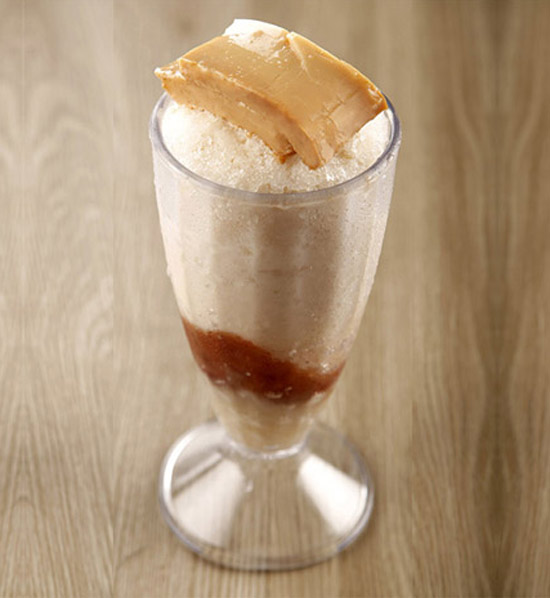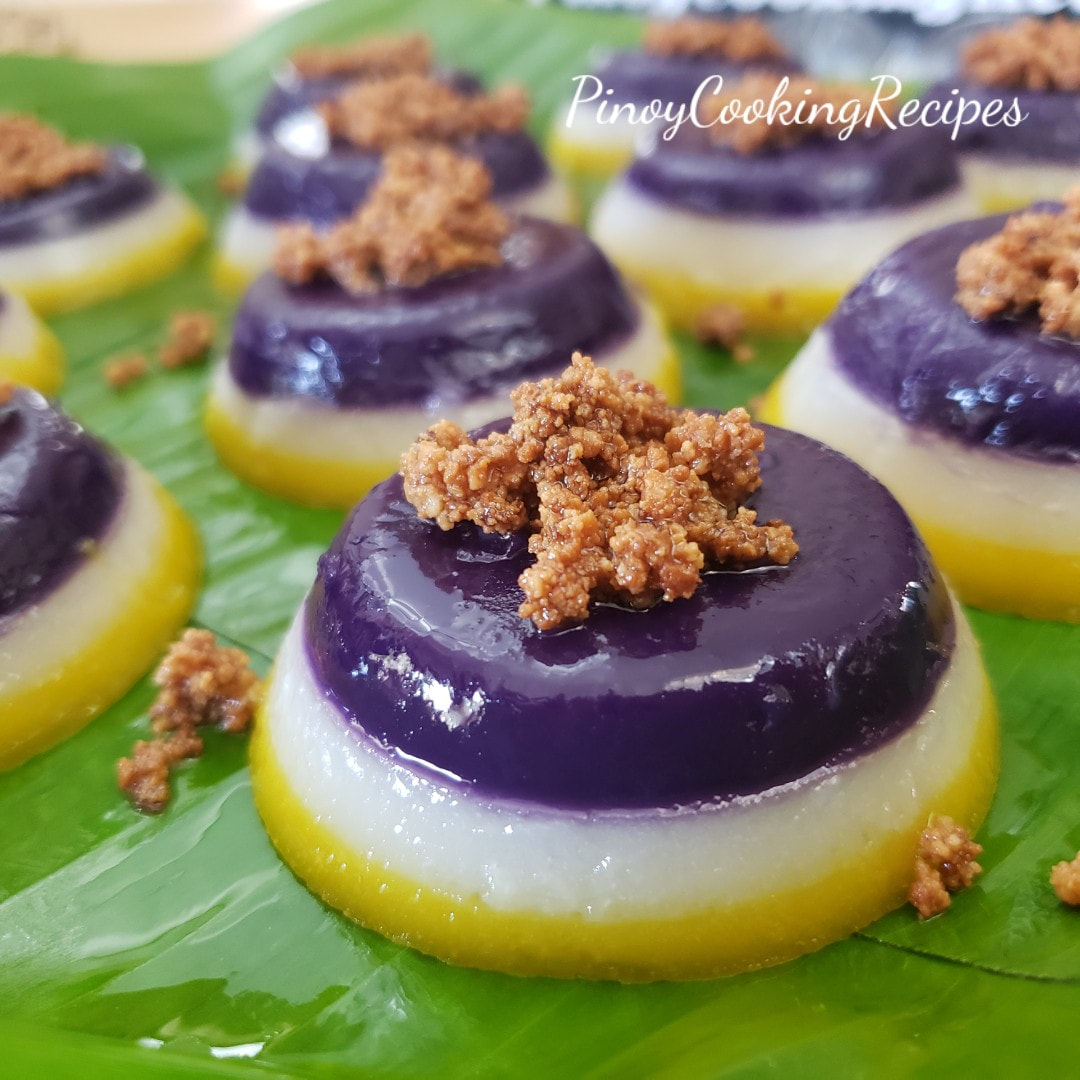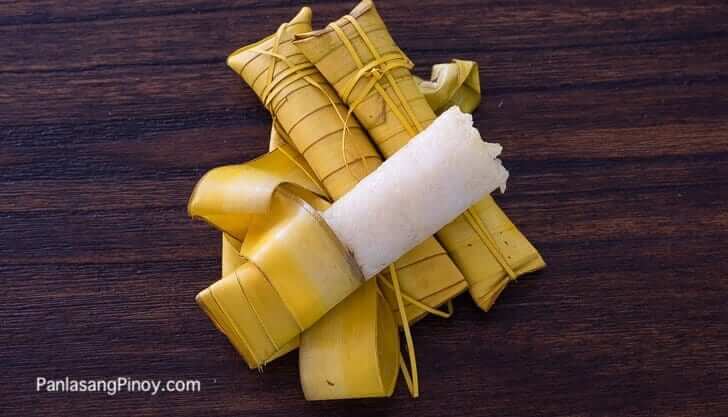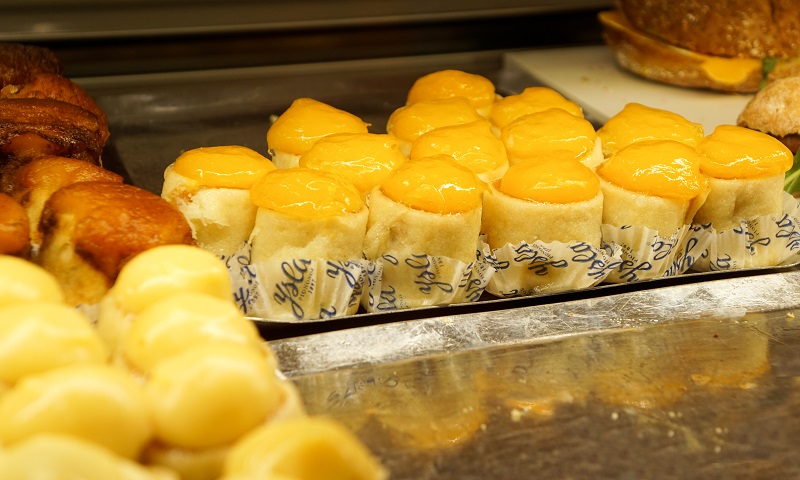Our country is home to the most colorful, aromatic, and delicious desserts and sweets. With cultural and traditional influences, the most iconic Filipino treats are infused with both flavor and history.
Let’s take a look at the most iconic Filipino desserts and see if we can have you craving by the end of this article.
Halo-Halo
The famous halo-halo never disappoints. This colorful and cold dessert is loaded with crushed ice, nata de coco, sweetened saba banana, beans, jackfruit, ube (purple yam) jam, milk, and topped with leche flan. Served in a tall glass, you mix everything together to enjoy this dessert.

Although this is the classic version of halo-halo, some regions in the country added their own flare to this dessert. In some areas of Pampanga, their halo-halo is only made with simple ingredients. These are crushed ice, sweetened saba banana, macapuno, evaporated or carabao’s milk, and topped with leche flan.

With this dessert, one thing is for sure. Either you are in for a complex or simple version of halo-halo, you will keep on coming back for this!
Leche Flan

If you had caramel pudding, leche flan might be a familiar taste to you. Leche flan compared to caramel pudding has a sweeter, richer, and silkier texture which easily melts in your mouth. Originally, leche flan was introduced to the Philippines during the Spanish colonization. Therefore, this dessert can be traced back to the borders of Spain or France.
This beautiful and golden-brown dessert is usually molded in llaneras – oval-shaped aluminum molds. Because of the simplicity of making leche flan, this sweet delight is served during special occasions or even on a regular day.
Buko Pandan

If you are a sucker for anything coconut, then you will enjoy every bite of this sweet treat. Buko pandan is a simple dessert to make with only six ingredients. The recipe calls for young coconut flesh, pandan (screw pine) leaves, green gelatin, cream, condensed milk, and small tapioca pearls.
The minty aroma from the pandan leaves, alongside the crunch from the coconut’s flesh, gives this dessert its fresh and cool smell and taste. If you are not much of a sweet tooth, this thirst quencher dessert will fit you. Buko pandan can still satisfy your sugar cravings without being too extra sweet!
Sorbetes

Ice cream is probably everyone’s favorite dessert. In the Philippines, when someone hears a ringing of a bell in the streets, people come running outside their homes to buy sorbetes.
Sorbetes is also popularly known as “dirty ice cream” because of the streets where it is being sold. This Filipino version of ice cream comes in different flavors such as cheese, mango, chocolate, ube, and more. Usually, sorbetes is scooped in small amounts and served in tiny sugar cones. But some people also prefer their ice cream sandwiched in a bun for a more filling treat. Now, if you are craving for a cheaper option to supermarket bought ice cream, then sorbetes is your go-to alternative.
Sorbetes is especially in demand during summer to satisfy one’s craving for a cool treat. Because of this cheap yet satisfying dessert, more people have used this opportunity to sell sorbetes as a means of their livelihood. So, don’t get surprised if you see a group of people circling around a sorbetes street cart, they are just really craving ice cream!
Sapin-Sapin

Who says that a dessert can only have one color? Well, sapin-sapin begs to disagree. This colorful rice cake always catches the attention of many because of its three different colored layers. Made with rice and coconut milk, every layer is tinted with different colors and flavored separately. Usually, the base layer is colored yellow with jackfruit flavor, the middle layer is a plain one, and the top layer is colored violet and flavored with ube.
Sapin-sapin is served either served in square or circular shapes and is topped with coconut flakes or latik coconut curds.
Turon

Turon is one of the go-to desserts or snacks of every Filipino. Since this crunchy and sweet banana treat is being sold in almost every street-side in the country, those who are craving for them can get their sweet fix right away.
Turon is a classic dessert in every Filipino home. Turon is made with slices of saba banana and jackfruit rolled into brown sugar. Then, it is wrapped in spring roll paper and fried until golden brown. In some restaurants that are offering banana split, they use turon instead of the ordinary banana. This little experiment adds a little crunch and texture to the banana split before topping it off with ice cream.
Sans Rival

Sans Rival is a dessert that is French in origin and literally means “no rival” or “unrivalled”. According to literature, there were Filipinos who traveled to Europe to study. Upon their return, they started learning and practicing the patisserie techniques they learned abroad.
Sans Rival is a decadent dessert made with layers of baked nut meringue and French buttercream. In its French counterpart, the recipe calls for either almond or hazelnut meringue. But in the Philippines, bakers use toasted cashew instead.
Ube Halaya

Purple yam or ube is a native flavor to the Philippines. Ube is widely used in different desserts such as cakes, pastries, ice cream, bread, and many more. Because of its vibrant hue, more people in other countries are also using ube as part of their dishes and desserts.
Although ube can be transformed into amazing desserts, its base form is also something you should look out for. Ube halaya is a mixture of boiled and grated ube with condensed milk, evaporated milk, coconut milk, butter, and sugar. This creamy and eye-catchy dessert is eaten by scooping a good amount with a spoon. It does not sound complicated, but it delivers amazing flavor to your mouth.
Puto

Puto is a steamed rice cake that is traditionally made with finely ground soaked rice and coconut milk. However, not every Juan has rice flour on hand. So, some recipes use cake flour or all-purpose flour as an alternative. These soft and fluffy desserts are molded on small round containers, steamed, and served with dinuguan (pork blood stew).
To add more variety to this dish, Filipinos came with different ideas. They played with the strong flavor and colors of cheese, ube, and pandan.
Suman

Another rice cake dessert that is well-known in the Philippines is suman. This simple yet filling treat is made with glutinous rice, cooked in coconut milk and sugar. It is then wrapped in banana leaves before steaming. Suman is already loaded with flavor and is best eaten on its own. But if you are more adventurous, one can opt to add some coconut sugar glaze for that extra sweetness.

